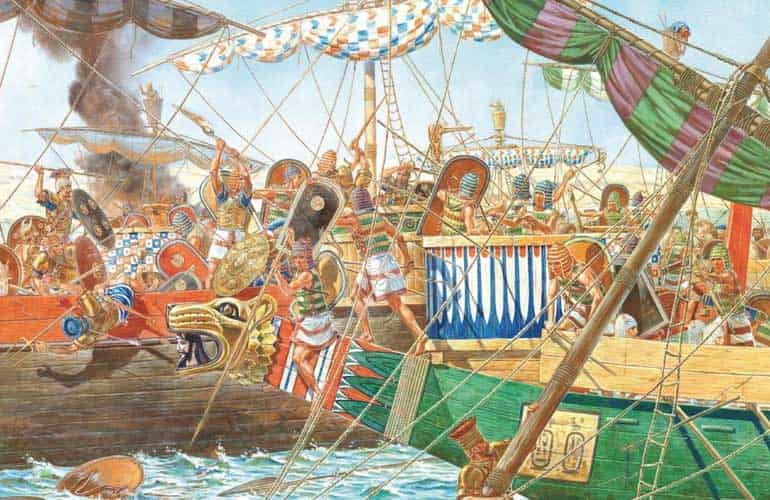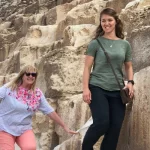The Battle of the Delta ( Battle of Djahy)
The Battle of Delta is an important land battle between the Egyptian forces of Pharaoh Ramses III (1184-1153) and the Sea Peoples in the conquest of Egypt. The conflict took place on Delta in the eighth year of his rule of Ramses III. In this battle, the Egyptians, under the personal leadership of Ramses III, crushed the Sea Peoples who were trying to invade the country by land and sea. Almost everything we know about the battle comes from The Mortuary Temple of Ramesses III at Medinet Habu. The description of the battle and the prisoners is well documented on the walls of the temple where the longest hieroglyphic inscription is also found. The Bas-relief depicting the battle provides much of the information relating to this conflict. They show Egyptian troops and their Chariot against an enemy who also used chariots.

Who is the leadership of The Battle of Delta?
Ramses III fought to save his Egypt from the invasion of various Middle Eastern powers and the Sea Peoples known by several other names, such as the Lukka (or Luka or Loukou or Lycians), who invaded the Middle East and the Eastern Mediterranean. The Pharaoh Ramses III had already repulsed a previous Libya attack west of the Egyptian border in the Fifth year of his reign. But the greatest threat did not come from the Libyans, but from this group of migrant peoples, the Peoples of the Sea. During the crisis that struck the Mediterranean in the 12th century, many ancient civilizations were destroyed by the attacks. The Hittites Empire fell along with the Mycenaean civilization and other great cultures, including the kingdoms of Cyprus and Ugarit.
What is the origin of the Sea Peoples?
Whatever the origin of the Sea Peoples, they moved around the eastern Mediterranean, attacking the coasts of Anatolia, Cyprus, Syria and the country of Canaan, before attempting an invasion of Egypt around 1180. Although we know that the Sea Peoples were formidable warriors, there is also evidence to suggest that they had a high level of military organization and strategy. One of the reasons Egypt was in danger was that the invaders wanted not just the spoils and possessions of the land, but the land itself, and there was no country with greater wealth than Egypt.
However, was no country other than Egypt could withstand their attacks, as the inscriptions on the funerary temple of Ramses III at Madinat Habu make clear
the peoples of the sea created a conspiracy… No land could resist before them: Hattians, Qode, Carchemish, Alashiya were destroyed at one point. They annihilated the People from Amuru its land was devastated as if it had never seen the light of day. They were arriving towards Egypt as a camp was being prepared against them.
Before the attack on Egypt, the Sea Peoples had invaded the Amuru, which was located near the Egyptian border. This gave the Pharaoh time to make preparations for the invaders’ planned attack. As Ramses III notes in an inscription in his funerary temple at Madinat Habu: “I have equipped my border of (Djahy) to prepare against them”.
Ramses III relates his battle with the Sea Peoples in these terms:
“The Egyptian chariots are warriors… and all good officers. Their horses are ready to crush strangers under their hooves… Those who reach my border, out of their seed are not, their hearts and souls are dead forever and ever”.





